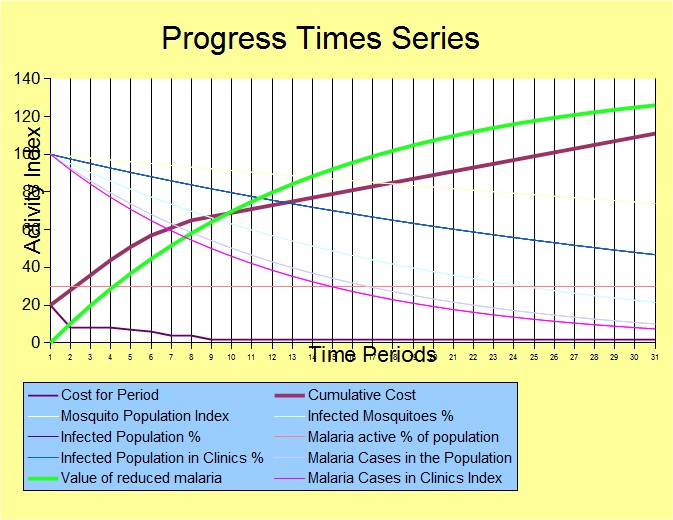
Date: 2025-12-20 Page is: DBtxt003.php txt00003424
Metrics
Malaria
Burgess ... This is a grpahic summary of a model for comprehensive malaria interventions that is cost effective and sustainable
Burgess COMMENTARY
The work was done in collaboration with the experts of the Integrated Malaria Management Consortium (IMMC)in 2007. The IMMC initiative was in response to the well funded USAID Presidenet's Malaria Initiative (PMI) program for malaria control that, in the opinion of IMMC, was planning on expensive interventions with no sustainability.
There were two threads to the IMMC criticism of USAID-PMI. One was based on science, and the other was based on applied cost accounting and system analysis.
A model of the way in which moquitoes and malaria interact was developed, and it was clear from this model that malaria could be reduced by a very large amount by killing off the malaria population. The model further showed that the malaria population came back almost as fast when the environmental conditions were suited ... most of humid Africa. The key to success was reducing the malaria carrying mosquitoes in the mosquito population ... which in turn reduced the proportion of mosquito parasite in the human population and vice versa.
The PMI support for 'just bednets' helped to keep mosquitoes away from people ... but did not address the root cause which is the parasite population. In this environment, malaria infection still continues.
I had another concern about the PMI initiative. My experience with big programs has been that very large 'leakage' of resources takes place, and it was apparent to me that neither PMI, nor the GFATM nor any other agency or organization involved was paying enough attention to the management and control of resources.
Peter Burgess
Complex Progress
One of the ubiquitous characteristics of everything is that there is complexity. Even where the observable characteristics may appear simple, the underlying activities are complex.
The following is the result of a very simple modelling of mosquitoes and malaria which shows how everything varies over time.
